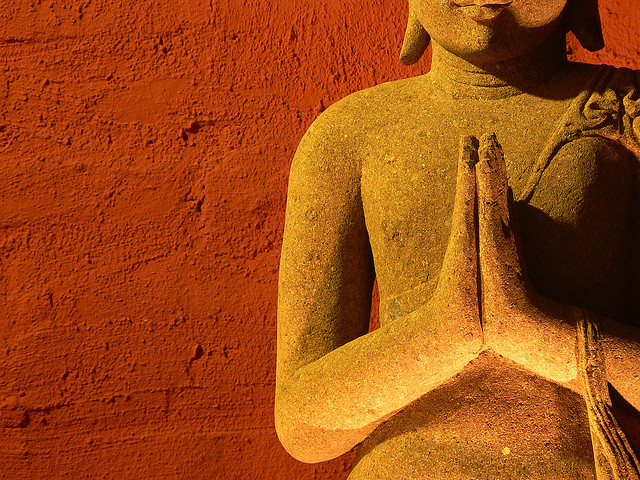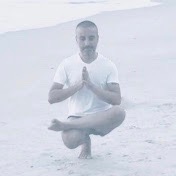People sometimes ask: Are yoga and meditation religious practices?
The physical aspect of yoga (asana) is a celebration of the human body and its potential. In this respect, the practice is almost incompatible with religions, which are traditionally body-phobic.
Meditation, on the other hand, can be seen as being closer to religion and is often likened to prayer. Of course, there are similarities, as certain meditation systems involve mantra repetition; which is almost the same as reciting a prayer. But there is one technique that offers a non-sectarian, secular approach: it invites us to focus on our breath and physical sensations, from more obvious ones, like hot and cold, to subtler ones, such as vibration.
Vipassana is a pre-Buddhist technique popularised by the Buddha 25 centuries ago. The name means “to see things as they really are.” Mindfulness meditation, now very popular as a stress-reduction method, stems from this ancient practice.
When I first attended the 10-day residential course, I experienced what I had known intellectually for a long time: that the mind can be our worst enemy and that, if left untamed, it can slowly destroy us. If this sounds extreme, think of emotions such as anger, resentment and hatred, which are generated by thoughts in the mind, and how destructive they can be to oneself and to interpersonal as well as collective relationships (for example, between rival nations or religious groups).
One of the advantages of the enforced “noble silence” on the course is that it encourages you to take the practice seriously—if you don’t, you go crazy! When you can’t speak or write to anyone for 10 days (the use of electronic devices isn’t allowed and you can’t even read a book), you realise just how wild the mind is. So long as we engage in conversation with someone else, we tend to follow a more or less logical path; but when the dialogue is only in our mind, it tends to branch out all over the place, with no logical sequence whatsoever—the Monkey Mind, as the Buddhist sages called it.
Another striking feature of the relentless mind chatter is that it’s very self-centred. During the first couple of days of the retreat, I was ashamed with myself at how self-centred my thoughts had been. But at the end of day two, in one of the video lectures that are shown in the evenings, the witty late teacher, S.N. Goenka, points out that this is the very nature of the mind; it’s just how it works. I finally understood what the concept of the mind and the ego being one and the same really meant—and I felt a big relief that it wasn’t just me!
After 10 days of continuous practice, you learn to feel your entire body vibrate, as the illusion of solidity dissolves. The illusion of solidity is created by the limits of our physical senses. The human brain can identify a limited range of colours and sounds that interact with our sense organs through energetic vibrations; thus our reality is based on our ability to perceive, and we cannot perceive all that exists, infrared light being a good case in point.
Everything in the universe is made of vibrating energy; even our body is vibration, as it is made of atoms, which are made of electromagnetic particles literally spinning in orbit. Modern physics teaches us that atoms have no definite boundaries: when our hand touches a wall, for example, there is a point at which it is impossible to say whether a particular atom belongs to our hand or the wall.
On last day of the course, the “loving kindness” (or metta) element is added to the vibration. Which makes it all the more special, because you literally feel as though you are radiating love and kindness. On my first meditation retreat, up in the Alps, I had achieved a similar result almost instantly through the Loving Kindness approach: I had felt my body float in and above the mountains; it was wonderful. However, feeling love on command isn’t always easy. For some, it is almost impossible, which is why the Vipassana technique is a very useful tool that ought to be taught in schools and prisons alike.
Sitting the 10-day course is a very effective way of increasing self-awareness. It is a rare opportunity to be removed from from the external world and to do nothing but meditate pretty much all day for 10 days straight, while all your basic needs are being met by the volunteers who run the centre. The technique also helps greatly with self-mastery. Like you learn not to scratch your body when you feel an itching sensation or to move around if you feel any pain or discomfort, but rather to observe these sensations until they pass, you also learn not to act on cravings or negative emotions, which also arise and pass.
Psychologists have estimated that on any given day a staggeringly high percentage of our thoughts are the same as the day before. In other words, the mind has a tendency to go round in circles. No wonder we are plagued by anxiety, depression, and all sorts of addictions, as many of these thoughts are driven by worry and fear. Fortunately, practices such as Vipassana meditation can help us “rewire” the brain and choose different thoughts and actions, enabling us to create lasting positive changes in our lives and, as a result, in the lives of those around us.
Author: Nico De Napoli
Image: Xomiele/Flickr
Editor: Emily Bartran; Travis May









Read 0 comments and reply